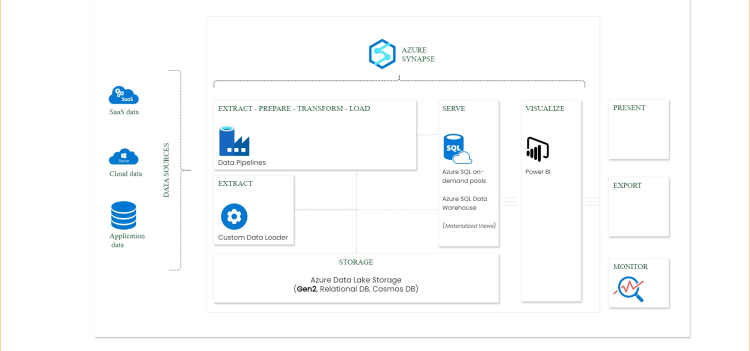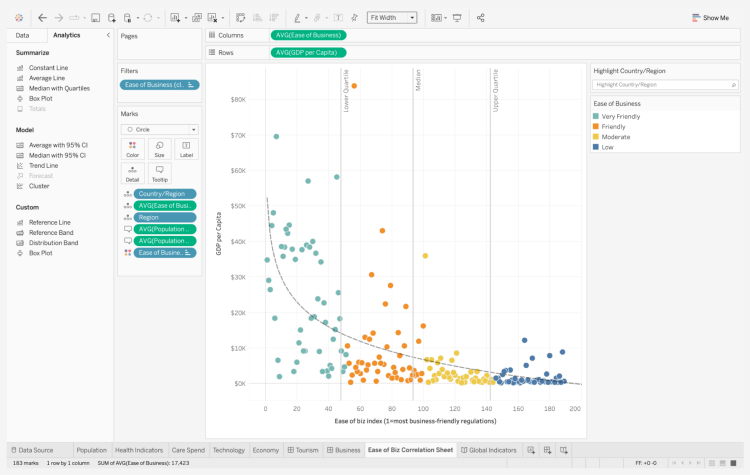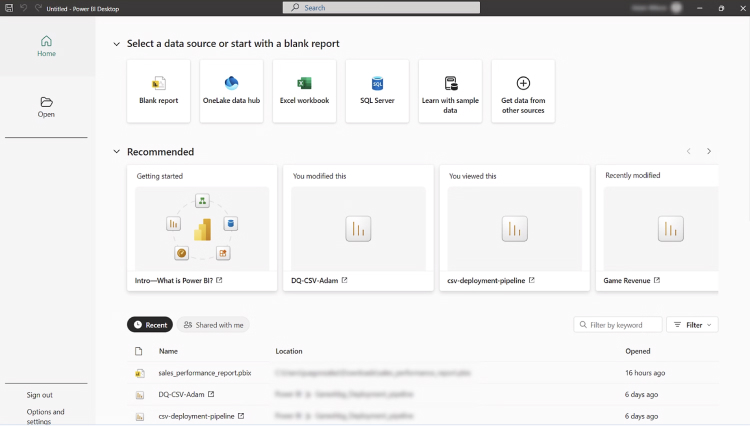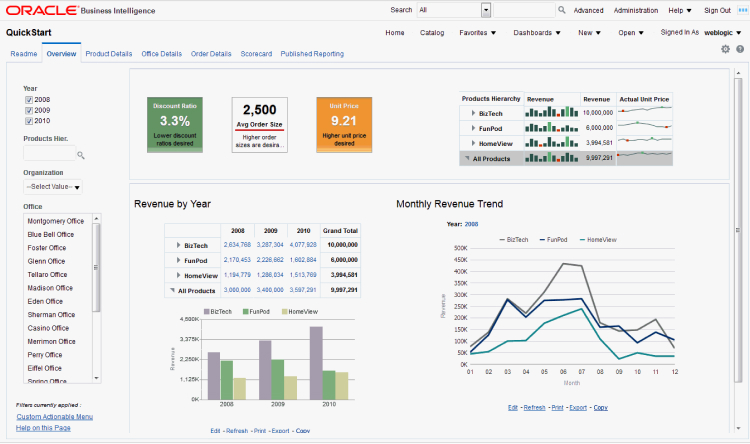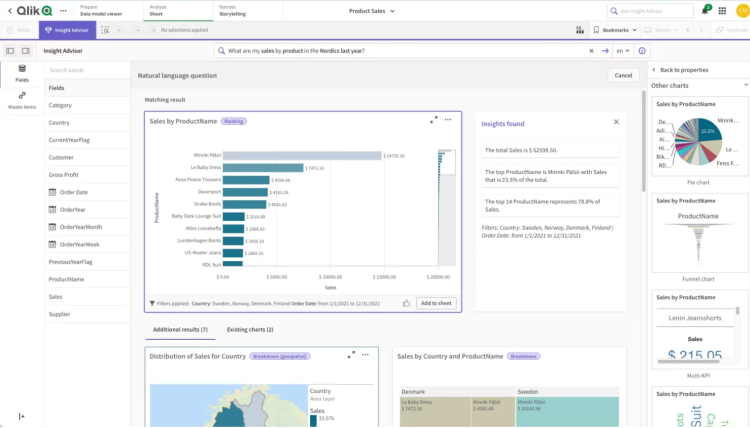In any business, accessing the right information is a must, especially when making important decisions. E-commerce is no exception. Owners and managers of online stores need to decide on new products to launch or how to improve their sales dynamics.
Even the most successful e-commerce businesses can encounter challenges when managing and analyzing data. Tons of data are scattered across Excel files, databases, and third-party platforms, creating a fragmented data landscape. This makes it incredibly difficult for business users to access and consolidate the information needed to generate meaningful insights, particularly when real-time reporting is crucial.
For business owners and top managers, this chaotic data environment can lead to missed opportunities and uninformed decisions. Without advanced analytics reports, key issues such as underperforming products, inefficient marketing spending, and shifting customer behaviors can go unnoticed. The inability to quickly and accurately interpret data not only affects day-to-day operations but also limits strategic decision-making. In an industry where every decision can impact its financial results, the lack of advanced business intelligence tools can turn what should be a competitive advantage into a significant liability.
As COO at Forbytes, I’ve dealt with many client requests related to data management. And believe me, many e-commerce businesses are so overwhelmed by their data that they struggle to make sense of it. They find themselves in the dark, unable to fully understand and utilize their datasets.
That’s why I’m here to explain why e-commerce business intelligence is a light at the end of the tunnel and how online stores and related companies can grow with their data.
Forbytes’ Stories: E-Commerce Challenges Solved with Business Intelligence
Before explaining our solutions and approach to e-commerce business intelligence, I want to share some on-point stories to illustrate the challenges BI can solve and the types of requests we receive from e-commerce companies and related businesses, such as those in logistics.
Online retailer: Fragmented data and the need for data-driven decisions
Bygghemma Group, a leading Nordic online retailer of home improvement and garden products, has expanded to 25 countries, and become a major player in the European market. They had many systems that generated and stored data: an e-commerce platform database, ERP system, PIM system, Google Analytics, internal datasheets, and more.
As their data volume increased, they faced challenges in extracting meaningful insights and making data-driven decisions. The fragmentation of data across these various sources only added to the complexity. That’s why it was difficult to get an overview of business operations, compare historical data, and make informed decisions based on complete and accurate information.
Logistics company: Lack of data control and real-time access
Another request came from a large logistics company that partners with online stores. This logistics business had a massive amount of data stored across various systems with different levels of user access.
Our client needed guidance on how to handle it to support daily operations, streamline financial activities such as invoicing, and provide comprehensive and accurate reports for decision-makers and clients. The need for a robust and secure access control system added further complexity, ensuring that data was only accessible to authorized personnel. This challenge led them to seek help from Forbytes and a Swedish data consultancy company to extract valuable data and transform it into actionable analytics.
Both stories illustrate that businesses often struggle with managing large amounts of data and turning it into valuable insights.
How Is Business Intelligence Different from Business Analytics?
Before explaining how our clients can benefit from e-commerce business intelligence, I’d like to explain the differences between BI and business analytics.
Business analytics uses historical data to predict future trends and develop growth strategies with tools like data mining and forecasting, helping businesses plan for the future. Business analytics is just a part of BI that analyzes isolated datasets to gain insights.
Business intelligence, on the other hand, analyzes both historical and current data to improve daily operations and achieve business goals using tools like PowerBI, SAP, or QlikSense. In e-commerce, BI integrates data from various sources and systems. Such an integrated approach allows for getting a complete picture of business operations and customer interactions.
The real-time data processing capabilities of BI speed up decision-making. Plus, the use of machine learning and advanced predictive analytics helps forecast future trends and customer behaviors.
Boost your e-commerce business with smart BI solutions. Contact our team to get insights, streamline operations, and drive growth with data-driven decisions.
Why E-Commerce Needs Business Intelligence
I never get tired of repeating that business intelligence for e-commerce can help you stay ahead of your competitors. Your decisions will become more actionable as you shift from assumptions towards facts and figures.
Reasonably, many companies choose BI to find more options for digital transformations. The market situation confirms this. According to the latest report, the global business intelligence market size was valued at $ 29, 42 billion in 2023 and is projected to grow from $31, 98 billion in 2024 to $ 63,76 billion by 2032, with an annual growth rate of 9,0% during the forecast period. Sounds impressive, right?
So, it’s high time to clarify why e-commerce companies need business intelligence. Here are the core benefits that our clients gain from using BI:
Data-driven decision making
BI tools collect and analyze data from various sources such as sales records, customer behavior data, supply chain records, and market trends. This enables e-commerce companies to make data-driven decisions based on facts and statistics across multiple business activities.
For example, BI has become an essential tool for our client, Bygghemma Group, in extracting valuable information and transforming it into actionable decisions related to audience expansion, product market volume analysis, and reaching diverse markets.
Advanced analysis capabilities
Another benefit of e-commerce business intelligence is advanced analysis capabilities. With BI solutions, you can go beyond basic reporting and visualizing your data.
For example, using BI, we helped our client forecast demand, manage inventory, and schedule deliveries more effectively. We customized data analysis, including reports, invoices, and business statistics, to meet the company’s specific needs and build effective key performance indicators (KPIs).
Live data streaming
E-commerce operations, from supply chain management to logistics and delivery, are complex and data-intensive. BI optimizes these operations by improving inventory management, supply chain logistics, and customer service. It enables real-time analysis of operational data, allowing for the quick identification of bottlenecks and inefficiencies.
For example, using BI, we enabled a logistics client to access their historical data, such as invoices and sales reports, in real-time. This allowed them to better understand seasonal fluctuations and ensure data availability.
Control over data quality
BI solutions centralize information from different sources into one place, keeping everything consistent and up-to-date. This centralization reduces the risk of poor data quality and simplifies management. By handling their data properly and utilizing accurate analytics, e-commerce businesses can significantly improve their data quality control.
For instance, we assisted a logistics company in organizing and storing their key data in a separate Data Lakehouse, retaining only what is relevant and valuable for their BI solution.
How E-Commerce Business Intelligence Can Be Used
Some business intelligence use cases such as building solutions for data-driven decision-making, quality control, monitoring, or advanced analytics capabilities broadly apply across many industries, including e-commerce. While BI may initially seem to be abstract, its application in e-commerce creates real value in many areas, including:
- Sales: BI is used to monitor product performance and identify top sellers. For example, with business intelligence, we helped the online retailer determine what products were popular in certain markets and what items should be sold to extend the target audience.
- Customers: BI is used to analyze customer behavior and preferences to improve shopping experiences. For example, an online retailer can use a BI solution to track which products customers view most and what they ultimately buy. This helps businesses personalize recommendations to boost sales and keep customers happy. It will also provide in-depth reports with demographics and sales data, allowing businesses to tailor marketing campaigns more effectively and even optimize site designs to better meet customer needs.
- Marketing: With BI tools, it’s possible to measure the success of marketing campaigns and target ads better. For example, business intelligence can show which groups respond best to campaigns, allowing companies to fine-tune their advertising strategies to increase ROI.
- Inventory and logistics: With BI tools, businesses can monitor stock levels in real time and predict when to restock based on sales trends. For example, a retailer can use BI to reorder products just before they run out, avoiding stockouts or overstocking. BI tools can also improve logistics by analyzing delivery times and costs, leading to a more efficient supply chain.
- Market trends: BI tools help businesses predict future trends by analyzing data from past sales, social media, and consumer behavior. For example, a fashion retailer can use BI to forecast which clothing styles will be popular and stock up accordingly, reducing the risk of unsold inventory.
- Finances: Automated financial reporting, custom reports, real-time financial data, and the ability to drill down into any financial metric – all of this becomes possible and accessible with BI solutions.
Best BI Tools for E-Commerce
With e-commerce BI tools, the primary goal isn’t just to build analytics solutions but to surface specific insights for data-driven decisions. When used in e-commerce, business intelligence can give you a comprehensive view of your store’s performance. Here is a list of BI tools that can be helpful for your business. We recommend exploring these options:
Tableau Analytics
Tableau Analytics is a powerful business intelligence tool known for its advanced data visualization and reporting capabilities. It provides users with interactive dashboards, real-time analytics, and comprehensive data analysis to help businesses make informed decisions.
Tableau Analytics excels in turning complex data into clear, actionable insights with customizable dashboards and a range of visualization options.
Best for: Businesses that need in-depth insights and dynamic visualizations of their data.
Power BI
Power BI is a robust business intelligence tool designed for creating interactive reports and dashboards with real-time data insights. It visualizes data through a wide range of customizable charts and graphs by facilitating analysis and informed decision-making.
Power BI simplifies complex data analysis and supports team collaboration with shared reports and dashboards, making it ideal for exploring and understanding data.
Best for: Businesses that need powerful data visualization and easy-to-create reports.
Oracle BI
Oracle BI enhances data-driven decision-making by transforming raw data into actionable insights. It offers a range of features including self-service analytics, predictive modeling, and mobile access. Oracle BI supports collaboration, helping decision-makers make timely and strategic choices in a fast-changing business environment.
Best for: Organizations seeking advanced tools for deep data analysis and strategic decision-making.
Qlik Sense
Qlik Sense is an advanced business intelligence tool known for its powerful associative analytics engine, which allows users to explore data and uncover insights with unmatched flexibility. It enables free selections in all objects, in any direction, to refine context and make discoveries.
With instant calculations and scalable performance, Qlik Sense goes beyond traditional query-based analytics and dashboards, offering a dynamic platform for interactive data visualization and self-service analytics.
Best for: Companies that need a flexible, high-performance tool for in-depth data exploration and visualization.
At Forbytes, we help e-commerce businesses use BI tools to make data-driven decisions and grow. Whether you need to organize data, develop custom analytics, or create real-time reports, we’re here to help.
Contact us today to see how we can turn your data into actionable insights and boost your business!
How to Integrate a Business Intelligence into Your E-Commerce Business
Keep in mind these steps if you want to integrate BI into your e-commerce:
- Step 1: Define your goals: Understand what you aim to achieve with a BI solution. Whether it’s gaining a 360-degree view of your business or implementing a narrowly focused reporting system, these objectives have to be decided early on to ensure the solution’s architecture aligns with your business goals and budget.
- Step 2: Understand your data: Identify all your data sources and types. Analyze which datasets are necessary and how they connect to establish a solid basis for BI integration.
- Step 3: Migrate to a data warehouse: Consolidate your data into a centralized location like a data warehouse for efficient management and easy access for analysis.
- Step 4: Choose the right BI tool: Select a BI tool that fits your e-commerce needs. Consider factors like ease of use, integration, and the specific features you require to gain valuable insights.
- Step 5: Create a comprehensive view: Use your BI tool to generate reports, dashboards, and visualizations. This helps turn raw data into actionable insights to inform decisions and understand performance.
Following these steps will help you integrate a BI solution into your e-commerce platform and use data effectively to drive success.
Final Thoughts
With a solid understanding of these e-commerce business intelligence fundamentals, you’re ready to use your data for business growth. The key steps are to understand your needs, pick a relevant BI tool, and create a roadmap based on your specific requirements.
At Forbytes, we offer business intelligence and analytics services. Our team can design a BI solution and seamlessly integrate it into your infrastructure. So, you’ll get an all-in-one tool to automate reporting, visualize data, and drive predictable business growth.
Need help integrating BI into your e-commerce platform? Contact us for expert assistance and support, and we’ve got you covered.



